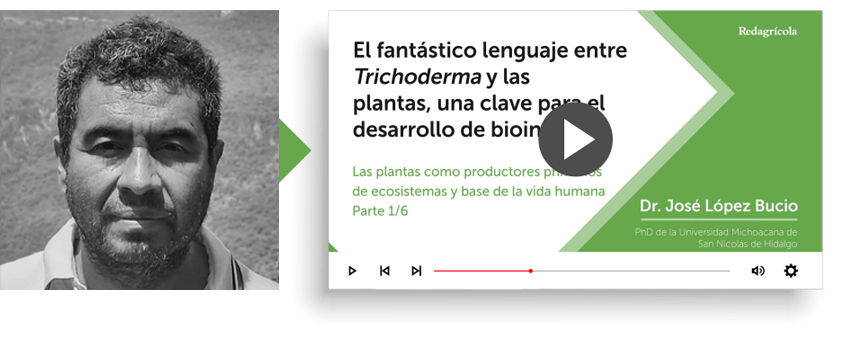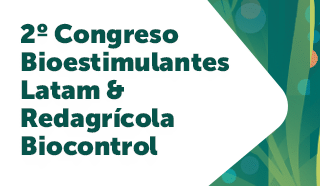10/Mar/2022
#03
SUBSCRIBE TO OUR NEWSLETTER
Suscríbete a nuestro newsletter
Last issue articles
- Biome: the space gaining protagonism in biological strategies for crops
- The export dynamics driving the Mexican biologicals market
- New model developed to evaluate effects of two or more biostimulants combined in a single crop
- Dr. Wagner Bettiol and the biocontrol market in Brazil
- Las propiedades que hacen del Trichoderma un socio clave en la búsqueda de mejores desempeños en los cultivos
- Changes in the new regulation on fertilizers and biostimulants in Chile
- Innovak Global, the expansion of root specialists
Market movers
- Renewable-based nitrogen fertilizer firm raises US$ 20 million in investment round
- Bayer and Ginkgo Bioworks close agreement to strengthen open innovation platform for agricultural biologics
- Argentinean firm Puna Bio: Millions raised to study superbacteria for agricultural use
- Corteva Agriscience signed an agreement to acquire leading biologics company Symborg
- Brazilian study uncovers ants' potential in crop protection
- Huber acquires specialty plant nutrition producer Biolchim
- UPL announces agreement to distribute bioprotector based on orange oil
- ICL and Lavie Bio start strategic collaboration to develop new biostimulants
- Hortitool and Green Smile to organize the Morocco Berry Conference 2022

PhD José López Bucio, from the University Michoacana of San Nicolás de Hidalgo
Video: the fantastic language between Trichoderma and plants, a key to the development of bioinputs
Recent research has revealed an incredible phenomenon: the mechanisms by which plants and microorganisms communicate, understand each other and adjust their behavior. This is presented by the renowned Mexican scientist José López Bucio, who explains how this process works based on recent explorations of the Trichogramma fungus. As the Professor-Researcher at the Institute of Chemical-Biological Research of the Universidad Michoacana of San Nicolás de Hidalgo points out, these interactions open the doors to a world where these living beings show a highly developed behavior, which has been key to the development of bioinputs for agriculture.
The content of this presentation, given at the Bioestimulantes Latam Congress, is divided into the following parts:
- Plants as primary producers of ecosystems and the basis of human life
- The intimate communication between microorganisms and plants
- The sensitivity of the Trichoderma fungus and its interaction with plants
- Biostimulatory and defense-inducing functions of Trichoderma
- The mechanisms used by plant and Trichoderma to communicate and adjust behaviors
- Trichoderma and its metabolite factory that the plant decodes
1. Plants as primary producers of ecosystems and the basis of human life
Communication has accompanied the evolution of living beings. Plants and animals, including humans, exist thanks to a microbial relationship that occurred millions of years ago. Plants, given their photosynthetic capacity, are today a source of life for countless species and have developed mechanisms to interact.
2. An intimate communication between microorganisms and plants
The plant delivers to the microorganisms part of the sugars and other compounds it manufactures, while the microorganisms increase the adaptive functions of plants to resist the tremendous pressure to which they are subjected in natural environments. As a result, plants increase their ability to uptake nutrients, change their architecture, shape or color, and modulate their defenses.
3. The sensitivity of two living things: the Trichoderma fungus and its interaction with plants
Upon verifying that plants notice how their environment changes and make decisions, Dr. López Bucio began to think that microorganisms do the same. Trichoderma feeds on other fungi, parasitizing them, so why not take advantage of its penetration mechanisms to parasitize roots as well? The scientist sheds light on the subject.
4. Biostimulant and defense-inducing functions of Trichoderma Trichoderma
Trichoderma colonizes the roots, where it not only helps to fight other possibly pathogenic fungi, but also stimulates growth and induces branching. The plant modifies its behavior when it "recognizes" the presence of Trichoderma.
The mechanisms used by plant and Trichoderma to communicate and adjust behaviors
Trichoderma emits volatiles differentially depending on how long it has been interacting with the plant. It also strongly acidifies the medium. Certain genes of the plant, on the other hand react to the molecules of the fungus, so that it varies the form development of the roots, changes characteristics of the foliage and the transport of sugars, among other aspects.
6. Trichoderma and its metabolite factory that the plant decodes
The acidification provoked by Trichoderma triggers the formation of lateral roots that explore the most superficial layers of the soil. Additionally Trichoderma is like a biofactory: it produces auxin precursors, auxins, indole-3-acetic acid, indole-3-acetaldehyde, indole-3-ethanol, indole-3-carboxaldehyde. The plant decodes the type of metabolites that the fungus is producing.
Last issue articles
- Biome: the space gaining protagonism in biological strategies for crops
- The export dynamics driving the Mexican biologicals market
- New model developed to evaluate effects of two or more biostimulants combined in a single crop
- Dr. Wagner Bettiol and the biocontrol market in Brazil
- Las propiedades que hacen del Trichoderma un socio clave en la búsqueda de mejores desempeños en los cultivos
- Changes in the new regulation on fertilizers and biostimulants in Chile
- nnovak Global, la expansión de los especialistas en la raíz
Market movers
- Argentinean firm Puna Bio: Millions raised to study superbacteria for agricultural use
- Corteva Agriscience signed an agreement to acquire leading biologics company Symborg
- Brazilian study uncovers ants' potential in crop protection
- Huber acquires specialty plant nutrition producer Biolchim
- UPL announces agreement to distribute bioprotector based on orange oil
- ICL and Lavie Bio start strategic collaboration to develop new biostimulants
- Hortitool and Green Smile to organize the Morocco Berry Conference 2022
About us
Biologicals Latam es una revista digital de Redagrícola que informa de manera especializada sobre la intensa actividad que se está desarrollando en el espacio de los bioinsumos para la producción agrícola. Esta publicación es complemento del Curso Online de Bioestimulantes y Biocontrol y las conferencias que este grupo de medios realiza en torno al tema.



